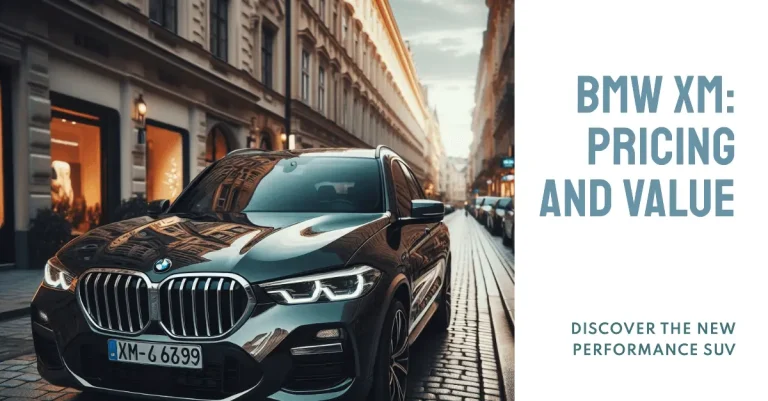Is BMW xDrive All-Wheel Drive Worth the Extra Cost?
BMW’s xDrive all-wheel drive system is available as an option on most of its crossover, SUV, and sedan models. But should you pay extra for xDrive when buying a new BMW? Or is rear-wheel drive enough?
Is BMW xDrive worth the additional cost?
The short answer is that xDrive can be worthwhile if you frequently drive in rain, snow, or cold weather. But it also improves handling and control in dry conditions. Read on as we take a detailed look at the pros, cons, technology, and value of adding xDrive to a new or used BMW.
How Does BMW xDrive All-Wheel Drive Work?
Before weighing the merits of xDrive, it helps to understand what this technology is and how it works.
xDrive is BMW’s intelligent all-wheel drive system. When equipped, it actively distributes torque between all four wheels of a BMW model for enhanced traction and control.
Key components of xDrive include:
- Transfer case: Variable transfer case seamlessly directs torque between the front and rear axles based on conditions.
- Active sensors: Camera, radar, and wheel sensors monitor traction at all times.
- Rear-wheel bias: By default, more power is sent to the rear wheels under normal driving dynamics.
If wheel sensors detect slippage at either axle, xDrive can instantly shift torque. It’s able to dynamically distribute up to 100% of available power to the front or rear wheels as needed. This helps maintain control and forward momentum.
This variable distribution also aids handling and control in dry weather by allowing optimal power delivery based on weight shifts and available traction when cornering.
Now let’s look at some specific advantages xDrive can offer BMW owners.
Added Traction in Rain, Snow and Slippery Conditions
One of the biggest benefits of xDrive is enhanced traction and drivability in wet, snowy, and icy conditions.
Rear-wheel drive BMWs rely entirely on the rear tires for accelerating and putting power down. This can lead to wheel slip in even light rain or snow. Applying throttle through a corner on a slippery surface is also challenging without losing control.
By contrast, xDrive maintains grip and composure in low-traction scenarios. Here are some of the key benefits:
- Better acceleration in rain or snow: xDrive allows full use of available engine power even on a slick surface. Traction control seamlessly distributes torque to avoid wheel slip when accelerating from a stop or at speed.
- Improved handling on snow and ice: Precise torque vectoring prevents understeer or oversteer when cornering on packed snow or icy roads.
- Maintains control if one wheel loses traction: If a single wheel starts spinning on a slippery patch, xDrive sends torque to the other wheels to keep moving forward.
Owners in rain-prone areas like the Pacific Northwest or cold weather regions appreciate xDrive for its wet weather handling and snow/ice traction. It provides added confidence and safety when driving in low-grip conditions.
Enhanced Handling and Control in Dry Conditions
While appreciated for its benefits in rain and snow, xDrive also improves handling dynamics and control in dry conditions.
The rear-biased torque split combined with active vectoring give xDrive-equipped BMW models a more agile and planted feel. Here are some handling enhancements you can expect:
- Traction when accelerating out of corners: As you accelerate out of a corner, weight is transferred rearward. xDrive dynamically sends more torque to the rear to take advantage of available traction.
- Better grip and stability when cornering: Through precise torque vectoring, xDrive allows you to corner at higher speeds with less risk of understeer. It also reduces body roll for flatter cornering.
- Quicker turn-in response: A more balanced front/rear power split results in sharper initial turn-in when entering corners.
- Composed handling at the limit: When pushed to the limit through tight corners, xDrive minimizes oversteer and understeer compared to rear-wheel drive models.
These improvements are most noticeable when you drive a BMW equipped with xDrive in a spirited manner on winding roads. But you also feel added stability in everyday driving scenarios.
Does xDrive Improve BMW Performance and Speed?
BMW owners weighing the xDrive option may be wondering: Does adding all-wheel drive make a BMW faster?
The short answer is generally no. In most cases, BMW’s xDrive all-wheel drive system has minimal impact on straight-line acceleration and top speed.
However, there are a few exceptions where xDrive does make certain BMW models quicker:
- BMW M models see a bigger performance benefit: The M5, for example, hits 60 mph up to 3 tenths quicker with xDrive versus rear-wheel drive (3.1 seconds vs 3.4 seconds).
- Marginal improvement in cold weather acceleration: In very cold temps, xDrive models can accelerate slightly quicker off the line before rear tires are warm.
For the average BMW owner not pushing their car to the limit on track days, xDrive delivers drivability and control benefits with minimal tradeoff in outright performance. Quarter mile times are at most 1-2 tenths slower for models like the 3 Series or X5.
Keep in mind that additional weight is one downside that counters potential acceleration benefits. xDrive adds about 121 lbs to BMW sedans and up to 175 lbs to crossover/SUV models. The minimal weight gain does affect efficiency and fuel economy to a small degree.
Is xDrive Worth the Extra Cost on a New or Used BMW?
For buyers cross shopping new BMW models, one key question remains: Is adding xDrive worth the additional upfront cost?
MSRP for xDrive on most BMW models ranges from $2,000 – $4,000 depending on the vehicle. But options packages can raise that price difference by another $1,000+ in some cases.
Whether that premium is justified depends on your budget and priorities:
- Worth it for frequent rain or snow: In regions with wet/cold weather, xDrive clearly provides extra capability and safety for a reasonable price.
- Benefits handling even in dry weather: The improvements to cornering grip and control have value for driving enthusiasts no matter the climate.
- Harder to justify solely for performance: Unless you track your BMW extensively, xDrive provides minimal acceleration/speed benefits for the cost.
On the used car market, finding an xDrive model does come with a higher sticker price. But when factored across your ownership period, the relative extra cost is low. The benefits will likely outweigh the marginally higher depreciation.
Ultimately xDrive increases a BMW’s all-weather versatility. This broadens its appeal to buyers who place priority on traction and stability over rear-wheel drive dynamics. The technology aligns well with BMW’s “Ultimate Driving Machine” ethos.
Conclusion: xDrive Delivers Added Control, But Evaluate Cost vs. Benefits
BMW’s intelligent xDrive all-wheel drive system offers clear advantages in low-traction conditions like rain, snow, and ice. Acceleration and cornering grip are vastly improved over rear-wheel drive models when dealing with slippery surfaces.
In dry conditions, xDrive also enhances handling precision, grip, and active safety. Power can be distributed to optimize corner exit traction or turn-in response based on available grip. Few other AWD systems offer this degree of precision and rear-wheel bias.
Downsides of adding xDrive relate mainly to cost. There is a price premium of $2,000 – $4,000 for the technology when configuring a new BMW. Fuel efficiency takes a minor hit as well.
However, the benefits outweigh the costs for many BMW buyers, especially those in wet climates. Even driving enthusiasts can appreciate xDrive for its dry weather handling perks. Just be sure to test drive BMW models both with and without xDrive to decide if it aligns with your needs and budget.







